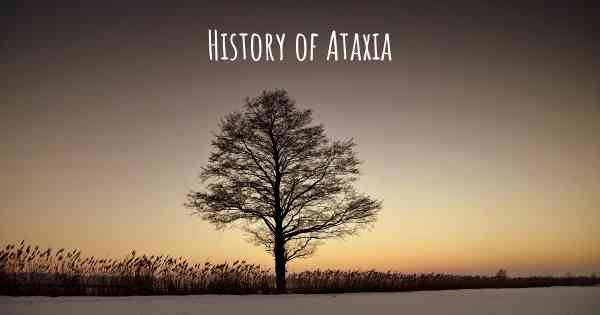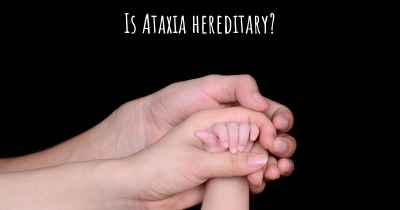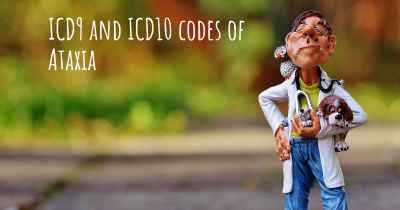What is the history of Ataxia?
When was Ataxia discovered? What is the story of this discovery? Was it coincidence or not?

Ataxia is a neurological disorder characterized by a lack of muscle coordination, resulting in unsteady movements and difficulties with balance. The history of ataxia dates back centuries, with its recognition and understanding evolving over time.
Ancient Times: The earliest known references to ataxia can be traced back to ancient civilizations. Ancient Egyptian medical texts, such as the Ebers Papyrus from around 1550 BCE, describe symptoms resembling ataxia. However, the condition was not clearly differentiated from other movement disorders at that time.
19th Century: The term "ataxia" was first coined by French physician Pierre Marie in 1888. He used the term to describe a group of disorders characterized by uncoordinated movements. Marie's work laid the foundation for the classification and understanding of ataxia as a distinct medical condition.
Friedreich's Ataxia: In 1863, German physician Nikolaus Friedreich described a specific form of ataxia that later became known as Friedreich's ataxia. This hereditary condition primarily affects the nervous system and is characterized by progressive muscle weakness, loss of coordination, and other associated symptoms. Friedreich's ataxia remains one of the most well-known and extensively studied forms of ataxia.
20th Century: The 20th century witnessed significant advancements in the understanding of ataxia. In the early 1900s, researchers began to identify different types of ataxia and classify them based on their underlying causes. This led to the recognition of various forms, including cerebellar ataxia, sensory ataxia, and vestibular ataxia.
Genetic Discoveries: In the latter half of the 20th century, breakthroughs in genetics shed light on the hereditary nature of many ataxias. Scientists identified specific genes responsible for certain types of ataxia, such as spinocerebellar ataxia (SCA) and episodic ataxia. These discoveries not only improved diagnostic capabilities but also paved the way for potential targeted treatments.
Advancements in Research: Over the past few decades, research into ataxia has expanded significantly. The establishment of dedicated organizations and research institutions focused on ataxia, along with advancements in technology, has accelerated the pace of discovery. Scientists continue to investigate the underlying mechanisms, potential treatments, and therapeutic interventions for ataxia.
Current Landscape: Today, ataxia remains a challenging condition to manage, as there is no cure for most forms. However, advancements in supportive care, physical therapy, and assistive technologies have improved the quality of life for individuals with ataxia. Ongoing research aims to develop targeted therapies and interventions to slow down or halt the progression of ataxia.
In conclusion, the history of ataxia spans centuries, with significant milestones in understanding, classification, and genetic discoveries. While there is still much to learn about this complex disorder, ongoing research offers hope for improved treatments and ultimately a better future for those affected by ataxia.








